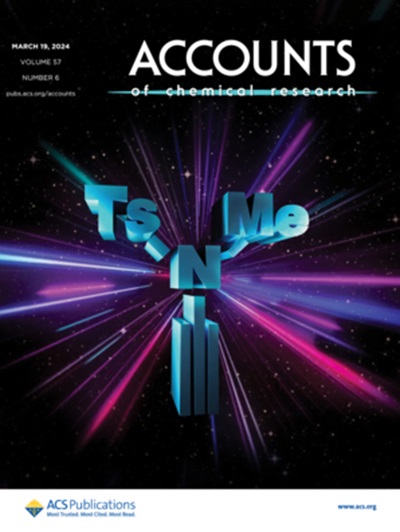优化骨科和创伤外科的院间转运:德国标准化护理的挑战、启示和建议
IF 17.7
1区 化学
Q1 CHEMISTRY, MULTIDISCIPLINARY
引用次数: 0
摘要
背景:德国医院密度高,设备不足,预计到 2030 年骨科和创伤外科相关疾病的发病率将激增,再加上人员短缺,预计医院之间的病人转院将增加,这是一个迫切需要标准化协议的问题。尽管目前已有一些合作协议,如关节置换中心之间或创伤网络DGU®内部的合作协议,但这些措施并不能充分解决病人转院的全部问题,包括那些由于缺乏专业化或人员短缺造成的转院,从而导致治疗延误和潜在的健康风险。本研究旨在剖析德国骨科和创伤外科医院间转院的复杂性,重点是了解转院的根本原因,比较小型医院和大型医院的运营结构,并为未来的标准化协议奠定基础,以加强对患者的护理。材料与方法:通过 SoSci Survey 以在线调查的形式开展了一项横断面研究,调查对象为在德国医院工作的骨科医生和创伤外科医生。调查共设 22 个问题,收集了参与者的诊所角色、科室详情、转院流程、常见诊断、对转院质量的看法以及需要改进的地方等信息。该调查由专业协会发送给德国的骨科和创伤外科医生。数据采用描述性和推论性统计方法进行分析,以确保全面了解医院间转运实践。结果:研究涉及 152 名参与者,他们来自不同级别的医院,分布在城乡地区不同规模和类型的医院。在基本/常规护理医院和中心/最高护理医院的护理结构之间观察到了明显的差异,尤其是在可用设施和专科方面。这些发现提出了改进建议,如改进患者文件记录、增加数字通信、优化患者分布和转院申请标准化等。结论:这项研究强调,在德国,骨科和创伤外科急需改进规程和资源分配,以消除医院间转院的不平等现象。本文章由计算机程序翻译,如有差异,请以英文原文为准。
Optimizing Interhospital Transfers in Orthopedics and Trauma Surgery: Challenges, Insights, and Proposals for Standardized Care in Germany
Background: Germany’s high density of under-equipped hospitals and anticipated surge in orthopedic and trauma surgery-related diseases by 2030, combined with personnel shortages, are expected to increase patient transfers between hospitals, an issue that urgently needs standardized protocols. Despite some existing cooperative agreements, such as between joint-replacement centers or within the Trauma Network DGU®, these measures do not adequately address the full range of patient-transfer cases, including those due to a lack of specialization or staff shortages, resulting in delayed treatment and potential health risks. This study aims to dissect the intricacies of interhospital transfers in orthopedics and trauma surgery across Germany, focusing on understanding the underlying reasons for transfers, comparing the operational structures of small and large hospitals, and laying the groundwork for future standardized protocols to enhance patient care. Material and Methods: A cross-sectional study was conducted in the form of an online survey via SoSci Survey, which was directed at orthopedic surgeons and trauma surgeons working in hospitals in Germany. The 22-question survey gathered information on participants’ clinic roles, departmental details, transfer processes, frequent diagnoses, perceptions of transfer quality, and improvement areas. The survey was sent to orthopedic and trauma surgeons in Germany by the specialist society. The data were analyzed using descriptive and inferential statistics to ensure a comprehensive insight into interhospital transfer practices. Results: The study involved 152 participants from various hospital ranks and located in different hospital sizes and types across rural and urban areas. A significant difference was observed between the care structures of basic/regular care and central/maximum care hospitals, especially regarding the available facilities and specialties. These findings suggest improvements such as better patient documentation, increased digital communication, optimized patient distribution, and standardization of transfer requests, among others. Conclusions: This study highlights the urgent need for improved protocols and resource allocation to eliminate inequalities in transfers between hospitals in orthopedics and trauma surgery in Germany.
求助全文
通过发布文献求助,成功后即可免费获取论文全文。
去求助
来源期刊

Accounts of Chemical Research
化学-化学综合
CiteScore
31.40
自引率
1.10%
发文量
312
审稿时长
2 months
期刊介绍:
Accounts of Chemical Research presents short, concise and critical articles offering easy-to-read overviews of basic research and applications in all areas of chemistry and biochemistry. These short reviews focus on research from the author’s own laboratory and are designed to teach the reader about a research project. In addition, Accounts of Chemical Research publishes commentaries that give an informed opinion on a current research problem. Special Issues online are devoted to a single topic of unusual activity and significance.
Accounts of Chemical Research replaces the traditional article abstract with an article "Conspectus." These entries synopsize the research affording the reader a closer look at the content and significance of an article. Through this provision of a more detailed description of the article contents, the Conspectus enhances the article's discoverability by search engines and the exposure for the research.
 求助内容:
求助内容: 应助结果提醒方式:
应助结果提醒方式:


